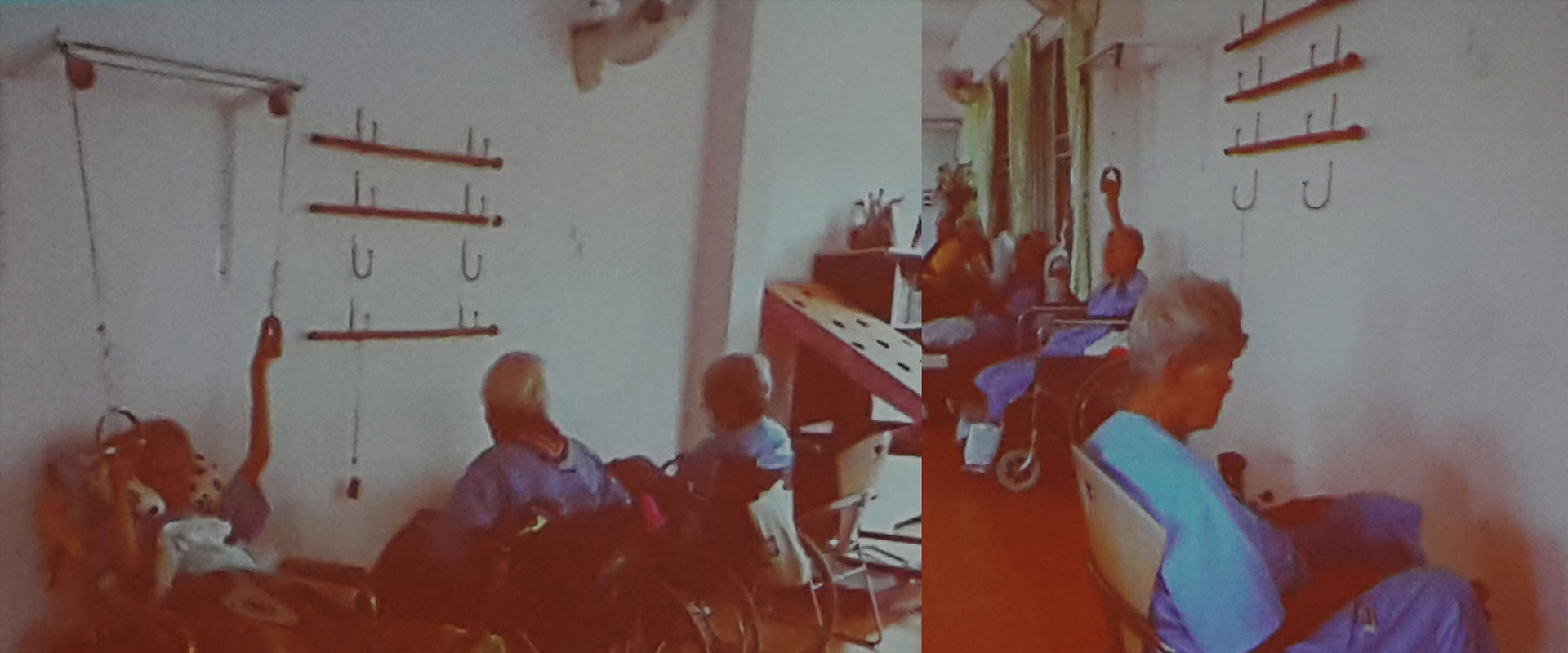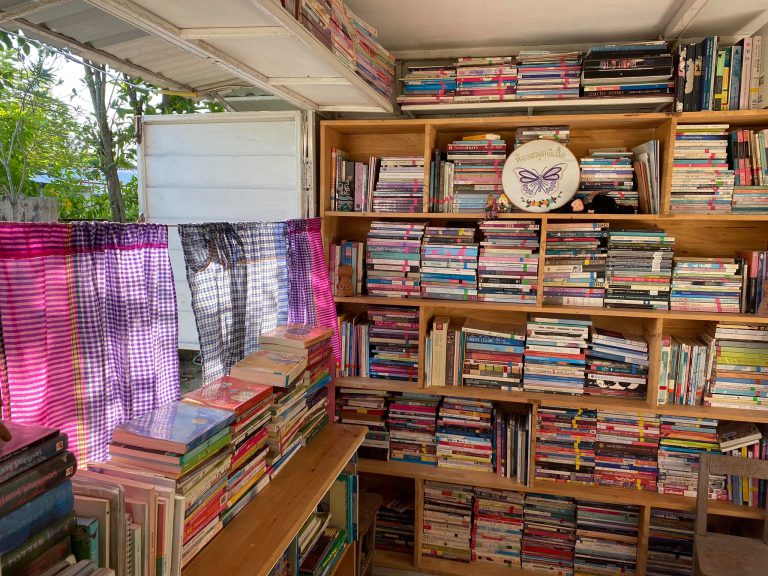Story: Aissara Pitayayon
Many of us have heard the old adage that happiness is found in the journey, not the destination, and that the key is to be able to bring happiness to every single moment of our lives. Joy should fill every breath we take till our very last, for we never know when the journey of our lives will come to an end.
Thailand has been an aging society, the demographic stage in which citizens over the age of 60 account for 10% of the total population, since 2005. We are currently evolving into an aged society, when seniors come to comprise 20% or more of the total population. Experts speculate that by 2031, Thailand will have advanced into a super aged society, when seniors constitute up to 28% of the population, with the growth of the senior population precipitating major implications for the economy and society as a whole.
Other aging societies have developed rubrics and policies to prepare for their expanding senior populations, such as raising the retirement age by 3-5 years and encouraging businesses to hire older employees to generate income flows for seniors. They have made modifications to urban and public spaces, to improve their accessibility for seniors, enabling seniors to move around and support themselves independently. New innovations and technology can also be used to improve seniors’ quality of life, including the development of toys for seniors.
The Department of International Trade Promotion organised a conference on senior toy design, “BIG TOY Design 2019: When Seniors Aged +61 Need Fun and Games”. Following its launch on August 16th 2019, the conference was divided into a weekly series of workshops held every Saturday from August 17th – September 18th. With the aim of promoting and developing the Thai toy industry, the project gathered entrepreneurs and designers and introduced them to the economic significance and opportunities of an aging society, such as the production of useful toys in anticipation of the demands of Thailand’s growing senior population, or ageing societies abroad, in the near future.
The project has caught the interest of people from a range of professions and fields, from entrepreneurs in the senior-oriented areas of the healthcare, tourism, furniture, real estate and consumer goods industries to creatives in ad design, architecture game design, graphic design.
A foundational understanding of the senior population and toy design is essential to senior toy design. Three speakers were invited to lead the workshops. The first was an orthopedist, who educated the participants on the aging process or in other words, general physiological deterioration. Contrary to children’s physical development, in ageing bodies, the function of the external body and inner bodily organs steadily decline. Seniors may also be more prone to mood swings.
Based on these patterns of change, seniors can be divided into three categories:
“Low-aged seniors” between 60-69 years old. Currently, there are 7 million low-aged seniors in Thailand. Seniors in this age range are still capable of working and participating in society. They begin to pay more interest in clean eating and exercise, and experience certain physical changes, such as the deterioration of the eyes, throat, back, arms and legs.
“Middle-aged seniors” between 70-79 years old, comprising 3.5 million people in Thailand. These seniors live at a slower pace, and spend more time resting. They require more support and education on the use of online media. Their physical deterioration is more advanced and noticeable, making them more vulnerable to falls, tremors and weaknesses. Therefore, it is crucial that they are protected from sliding and falling, which may be disabling.
“Old seniors” between 80-89 years old. There are 1.5 million old seniors in Thailand. They are more reliant on external help. They may experience a deterioration of their mental and neurological faculties, and their general physical condition. Some may be bed-ridden from illness, or disabled.
Nonetheless, seniors across all three categories have physical and emotional needs in common, as well as similar social and economic challenges:


In terms of physical health, seniors should be getting regular exercise and adequate rest to maintain good physical health and should have a regular health-aide who helps them take care of themselves. They need good living spaces and environments with accommodations to suit their needs and protect them from accidents.
Generally, the emotional well-being of elderly individuals changes with their physical health and environment. Unable to accept the deterioration of their memory and mental abilities, they may be more prone to feeling despondent, neglected and stressed. They must feel respected and cared for.

As for their social needs, seniors tend to want to be less reliant on others and be able to support themselves. They want to contribute to society and find personal fulfilment. Income insurance and senior health insurance are also a must.
Additionally, studies conducted into senior media habits have found that Line accounts for 50% of media usage among seniors because it can be easily used to communicate short messages and send pictures. Next is television, at 24%, since seniors like to leave the tv on as background noise, without changing channels, to feel less lonely.
Sukanya Wongbuaban was the second speaker of the workshop series. A physical therapist from the Sudthavas Chalermprakiat Foundation’s Elderly Women’s Home in Nakhon Nayok, she shared what she had learned from her personal experience in caring for elderly patients.


The Sudthavas Home welcomes elderly women into a community of peers and caregivers. The women live in two buildings: the “Independent Living Home”, for women who are able to take care of themselves, and the “Supportive Home”, for others who require caregivers. From morning to evening, the women follow a daily routine. They wake at 4:00am and gather at the sala to meditate at 6:30am for half an hour. Then, they exercise, or go to physical therapy.
The physical therapy equipment doesn’t look intimidating, nor does using them make the women apprehensive. Instead, they are intuitively designed for use with elderly patients: for example, two pulleys, with a gap between them the width of one of the women’s arms, are attached to a rope that she pulls to strengthen her arms and hands; or a stationary bicycle for exercising the legs. They also throw balls into numbered hoops according to a written sequence, a game which not only gets the women physically active and strong but is also a source of fun and stress-relief.
The women alternate between physical therapy and gardening every other day. They love to plant vegetables that grow close to the earth, because they get to touch the soil and breath in the smell of the grass. Once the vegetables are ready for harvest, the women bring them to the kitchen for their friends’ midday meal. The vegetables keep the women healthy, and they derive a sense of pride from being able to provide for one another.
There are many activities in the afternoon to keep the women from feeling listless and help them stay active. Their supplies are widely available and easy to use. In one of the group exercises, the women pass a plastic ball on top of cardboard in a circle. The game engages their hand muscles, as they maintain their grip on the cardboard, and their arm muscles to balance and pass it to the next woman in the circle. As they await their turn, the other women in the circle test the strength and resilience of their own gripping ability.
Another activity involves cutting a piece of A4 paper into an 8 metre long strip, an exercise in strategic-thinking that stimulates the brain and strengthens the arm muscles, wrists and fingers.
In order to cultivate their thinking skills, memory and reading ability the women play a word game where they arrange a series of letters into words. There are also arts activities for the women, such as rock-painting, where the women exercise their arm muscles and hands in the process of expressing themselves creatively, and practice their drawing skills.
Additionally, the women make hand-crafted sandalwood flowers that are donated to a nearby temple. The making of one sandalwood flower is a collaborative effort, each woman preparing a component to be assembled together. The flower-making sessions are social ones; the women talk and listen to one another, which relieves their feelings of loneliness and isolation. The women also find flower-making sessions the most fulfilling, because to be able to positively contribute to society gives them a sense of pride.
Once the project’s participants had a good understanding of the senior population, the target consumer group for the vanguard of the toy industry, the last speaker was invited in to lead a workshop on the fundamentals of toy design. The speaker was no other than Natcha Rojviroj, a toy designer and founder of Blix Pop, a social enterprise that produces toys for blind children.
Designing toys for the elderly will be challenging, warns Ms. Rojviroj, because they differ from children’s toys in many respects. She recommends that the toys serve a practical function and be intuitive and uncomplicated to use, though they must be compelling enough to keep users coming back to play, and entertaining for everyone.
The design process should begin with the premise that seniors are the primary user demographic, and therefore proceed from research into their preferences and physiological conditions. Through listening, observation, critical analysis and interviews with different groups of seniors, the needs that the senior population hold in common will become clear. Then, preliminary designs and prototypes can be developed and sent to seniors to try out. Throughout the product testing stage, data is collected on the properties, size, color, as well as the user experience before and after play, to be further analysed for the product’s advantages, disadvantages and areas for improvement. This process is repeated over and over again until the product is best aligned with the needs of senior users.

Through hands-on experience in conducting interviews with primary user groups, product design, development and prototype production, this five week workshop series gave designers and entrepreneurs a more rigorous understanding of the practical aspects of senior toy design. What sorts of products that will supplement seniors’ physical, emotional and mental health, or augment their social well-being and happiness will emerge now that the project is over? Support our participants and keep an eye on their work as we move into the future together.



